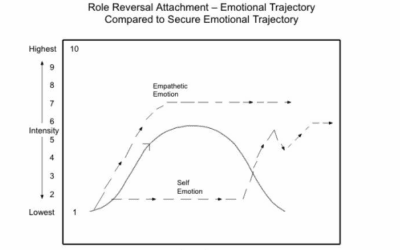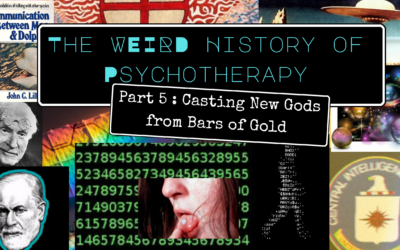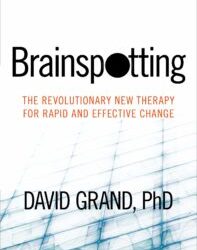If you’re searching for advanced trauma therapy, you have likely moved beyond traditional talk therapy. You may have read “The Body Keeps the Score” and realized that your trauma isn’t just a story to be told—it’s an experience stored in your body. In your research, two powerful modalities constantly come up: Brainspotting and EMDR (Eye Movement Desensitization and Reprocessing).
So, let’s break down Brainspotting vs. EMDR.
First, What Is EMDR?
EMDR, or Eye Movement Desensitization and Reprocessing, is a well-researched, 8-phase structured psychotherapy. It’s based on the Adaptive Information Processing (AIP) model, which suggests that trauma symptoms are the result of distressing memories being incorrectly stored in the brain.
During an EMDR session, a therapist guides you through a specific protocol. You will be asked to briefly recall a distressing memory while simultaneously engaging in bilateral stimulation (BLS)—most commonly, following the therapist’s fingers with your eyes, or using alternating taps or sounds. This BLS is thought to help the brain’s processing system, allowing it to “digest” the memory and store it properly. The memory doesn’t disappear, but its emotional charge—the panic, fear, or shame—is significantly reduced.
- Learn More: Read about our approach to EMDR Therapy here.
- Authoritative Link: Learn more from EMDRIA (the EMDR International Association).
And What Is Brainspotting?
Brainspotting was actually discovered by an EMDR therapist, Dr. David Grand. He noticed that during EMDR, a client’s eyes would sometimes reflexively “wobble” or freeze at a specific point in their field of vision. He developed this observation into a new modality based on the simple but powerful idea: “Where you look affects how you feel.”
Unlike EMDR’s guided eye *movements*, Brainspotting involves finding a fixed eye position (a “Brainspot”) that connects directly to the subcortical brain, where trauma is held. While you maintain that gaze, you allow your brain and body to process the “felt sense” of the issue with minimal intervention from the therapist. It’s a more flexible, client-led, and deeply somatic process. You don’t have to talk extensively about the trauma; you simply allow your brain to do its natural healing work.
- Learn More: Read about our approach to Brainspotting Therapy here.
- Authoritative Link: Learn more from Brainspotting International.
Brainspotting vs. EMDR: The 3 Key Differences
While both are “bottom-up” therapies (meaning they work with the body and brain first, rather than just thoughts), their approaches are distinct.
1. Structure vs. Flexibility
EMDR is a highly structured 8-phase protocol. Your therapist is an active guide, leading you through each distinct phase, from history-taking and preparation to desensitization and closure. This is excellent for clients who feel safe with a clear roadmap and predictable steps.
Brainspotting is more flexible and intuitive. There is no set protocol. The therapist’s job is to attune to you, help you find the Brainspot, and then “hold the space” while your brain leads the process. This is ideal for clients who prefer a more organic, meditative, and internally-directed experience.
2. The Process: Bilateral Movement vs. Fixed Gaze
EMDR uses *movement* (bilateral stimulation) to process a memory. The back-and-forth eye movements are central to how the brain desensitizes the traumatic event.
Brainspotting uses a *fixed gaze* (a “Brainspot”) to access a memory. The core belief is that the eye position itself holds the neurophysiological connection to the trauma. By holding the gaze, you are accessing a deep channel in the brain and allowing it to “unspool” and release.
3. The Focus: Cognitive vs. Somatic
EMDR incorporates cognitive elements. As part of the protocol, you will be asked to identify a “negative belief” about yourself related to the trauma (e.g., “I am not safe”) and a “positive belief” you’d like to install (e.g., “I am safe now”). It actively bridges the cognitive and somatic.
Brainspotting is almost purely somatic and subcortical. It operates on the “felt sense” in the body. While insights may arise, the goal isn’t to create a new belief, but to release the stored activation in the nervous system. Many clients who feel “stuck in their heads” find Brainspotting allows them to finally drop into their bodies.
So, Which One Is Right for Me?
This is the most important question, and the answer depends on your personality and history.
EMDR may be a great fit if you:
- Are processing specific, “single-incident” traumas (like a car accident or a specific assault).
- Appreciate structure and a clear, therapist-guided process.
- Like the idea of replacing a negative belief with a positive one.
- Want to use a modality with decades of extensive research.
Brainspotting may be the right choice if you:
- Are working with complex, developmental, or pre-verbal trauma (trauma from early childhood).
- Have tried talk therapy (or even EMDR) and still feel “stuck” or “numb.”
- Struggle to put your feelings or trauma into words.
- Prefer a more flexible, intuitive, and internally-led process.
- Are also working through creative blocks, anxiety, or somatic symptoms (like chronic pain).
You Don’t Have to Choose Alone
The best part is that you don’t have to be the expert. At Taproot Therapy Collective, our clinicians are deeply trained in both modalities. We often integrate these tools based on your specific needs, session by session.
You don’t need to know the path to healing; you just need to be willing to take the first step. We are here to guide you.
If you’re in Alabama and ready to move beyond just talking about your trauma, we’re here to help. Contact us for a free consultation, and we can explore which path is right for you.


























0 Comments